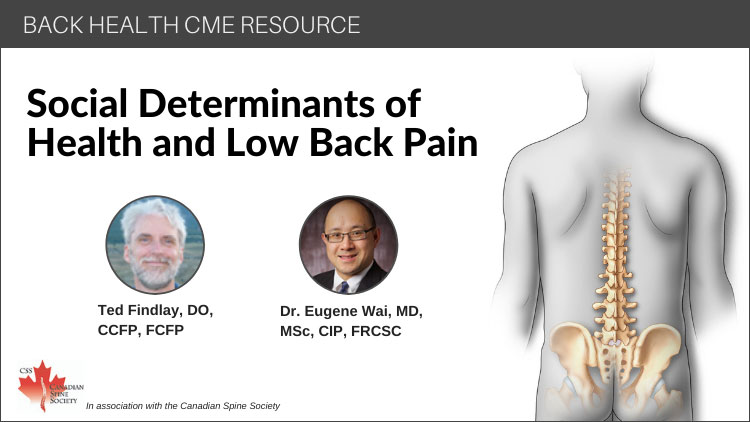1,2Darren M. Roffey PhD; 1Simon Dagenais DC, PhD, MSc; 3Ted Findlay DO, CCFP; 4,5Travis E. Marion MD, MSc; 6Greg McIntosh MSc; 1,2,4,5Eugene K. Wai MD, MSc, FRCSC
1University of Ottawa Spine Program, The Ottawa Hospital, Ottawa, ON, 2Clinical Epidemiology Program, Ottawa Hospital Research Institute, Ottawa, ON,
3Department of Family Medicine, University of Calgary, Calgary, AB, 4Division of Orthopaedic Surgery, The Ottawa Hospital, Ottawa, ON, 5Department of Surgery, Faculty of Medicine, University of Ottawa, ON, 6CBI Health Group, Toronto, ON,
Abstract
Obesity and low back pain are equally complex medical conditions with multi-factorial etiologies. Their clinical practice guidelines both include recommendations for screening and examination that can be easily implemented. There is sufficient information to compile a framework for the primary care provider, partnering with the patient and appropriate specialists, to manage obesity and low back pain in a structured fashion. Weight loss and exercise are paramount and should be recommended as the first options. Cognitive behavioural therapy, pharmacological treatment and bariatric surgery may then be implemented sequentially depending upon the effectiveness of the initial interventions.
Key Words: Obesity, low back pain, exercise, nutrition, cognitive behavioural therapy, bariatric surgery, weight loss, pharmacological, evidence-based guideline.



